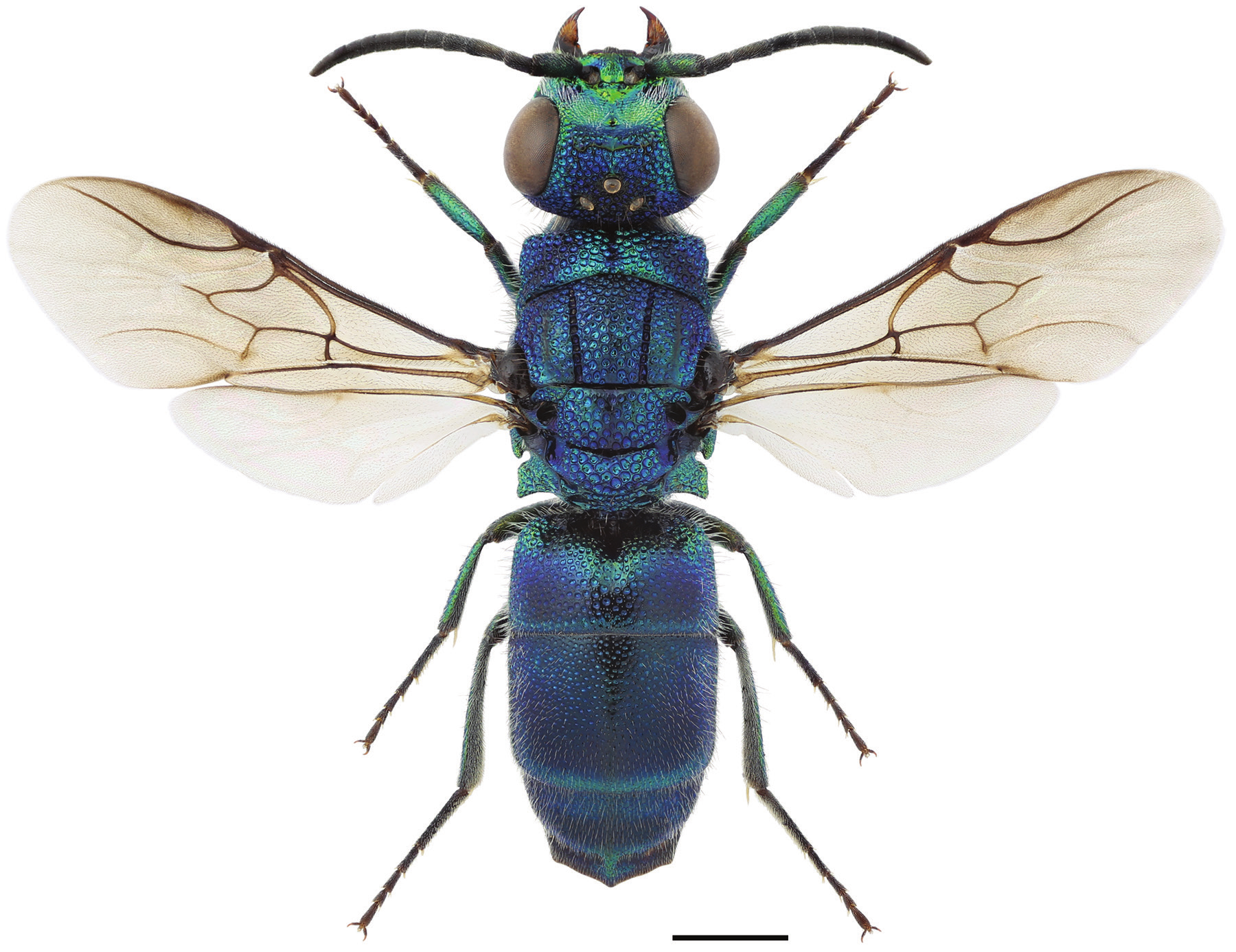Trichrysis
In Europe, this genus is characterised by the tridentate posterior margin of T3 (Figs 197, 198), the medially located small black spots of S2 (Fig. 199), and the simple metanotum (Kimsey and Bohart 1991). The European species are relatively small (body length ca 4–8 mm) and completely blue or green in colour. Small males are often blackish, at least dorsally. The hosts are cavity-nesting crabronid and pompilid wasps, and possibly also solitary vespid wasps and megachilid bees (Trautmann 1927, Pärn et al. 2014). The genus includes 27 species in the Palearctic, Afrotropical and Oriental Regions (Kimsey and Bohart 1991, Strumia 2009). Three species have been found in Europe (Rosa and Soon 2012), and one, T. cyanea, from the Nordic and Baltic countries (Paukkunen et al. 2014).
